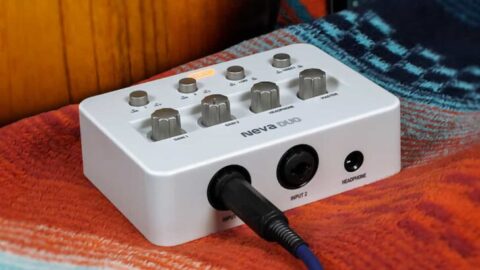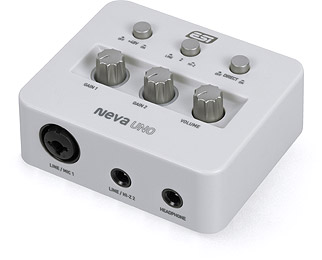ESI introduces Affordable Desktop Audio Interfaces, Neva Uno and Neva Duo
ESI has introduced a pair of affordable audio interfaces, the Neva Uno and Neva Duo.
The Neva Uno features a single XLR combo microphone preamp, while the Neva Duo features 2x XLR microphone preamps.
“We decided that it is time to provide basic professional features, like ultra-low-latency ASIO drivers and decent 24-bit / 192kHz support, at a cost anyone can afford.”, says ESI CEO Claus Riethmüller.
Neva Uno Features:
- 2 input / 2 output 24-bit / 192kHz USB 3.1 audio interface with USB-C connector
- XLR combo microphone preamp with +48V phantom power support
- Hi-Z instrument input with 1/4″ connector
- USB bus powered (no additional power adapter needed)
- line output with unbalanced RCA connectors
- headphone output with 1/4″ connector
- ADC with 97dB(a) dynamic range
- DAC with 107dB(a) dynamic range
- zero latency hardware direct input monitoring activated by switch
- master output volume control
- supports Windows 10, Windows 11 with ASIO 2.0, MME, WDM and DirectSound
- supports macOS via the native CoreAudio USB audio driver from Apple
- stereo hardware loopback channel for internal recording
Neva Duo Features:
- 2 input / 2 output 24-bit / 192kHz USB 3.1 audio interface with USB-C connector
- 2x XLR microphone preamp with +48V phantom power support
- 2x Hi-Z inputs with 1/4″ connector
- USB bus powered (no additional power adapter needed)
- line output with balanced/unbalanced 1/4″ TRS connectors
- headphone output with 1/4″ Stereo connector and separate volume control
- ADC with 97dB(a) dynamic range
- DAC with 107dB(a) dynamic range
- zero latency hardware direct input monitoring activated by switch
- master output volume control o supports Windows 10, Windows 11 with ASIO 2.0, MME, WDM and DirectSound
- supports macOS via the native CoreAudio USB audio driver from Apple
- stereo hardware loopback channel for internal recording
ESI expects the Neva Uno and Neva Duo to be available in Europe in December, priced at € 69 and € 85 respectively, and globally early next year. Find out more on the ESI website.



























